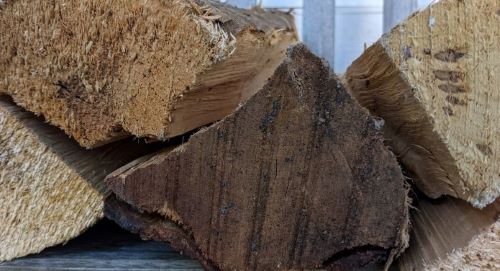Firewood 101
Return to Natural Resources Agent Articles
Firewood can be a source of warmth and comfort, but it can also lead to unwanted consequences such as pests entering the home, diseases being spread from tree to tree, and housefires. Because of this, there are some environmental practices to keep in mind to prevent the spread of tree pests and diseases and to keep you and your family safe while enjoying a pleasant fire.

The general rule of thumb is to burn wood less than 50 miles of where you procured it. Firewood can be harboring insects and diseases, some of which could be spread when you get to your location and others could even spread along your route as you drive. To be extra cautious, travel no further than 10 miles from your planned burn site to purchase or collect firewood.
Store wood outside
Store firewood outdoors. Bring in only what you plan to burn immediately or within a few hours. Storing firewood for extended periods inside the home, garage or basement allows pests developing or hiding in the wood to emerge within the structure.
Position the woodpile away from the side of the house and off the ground. Firewood stacked against the side of a building can create a moisture problem and provides a hidden, direct avenue for termites and carpenter ants into the structure. Stacking the wood off the ground (e.g., on poles suspended between concrete blocks), increases air circulation and drying.
Burn older wood first to minimize the time during which insect infestations can become established.
Not all wood is equal
Firewood from different species or types of trees varies widely in heat content, burning characteristics, and overall quality. In our area look for oak, locust, hickory, ash, sugar maple and even osage orange. But be particularly careful with osage orange in a fireplace because of its characteristic popping and sparking. This can be a fire hazard if not contained.
Wood should be seasoned, or allowed to dry, before using as firewood. This usually takes at least six to nine months of drying time after cutting fresh wood. Burning wood with higher moisture contents produces more smoke and less heat. The smoke produced from burning “green” wood also adds to creosote buildup in chimneys, creating a potential fire hazard.
Kiln-dried firewood is wood that has undergone a heating process to remove internal moisture, which speeds up the seasoning period. Not all kiln-dried firewood has been heated to a high enough temperature to kill all insects and pathogens. When firewood is certified as “heat treated” by the USDA, the wood core has been heated to a high enough temperature that it kills all insects, eggs, pathogens, and fungus spores (but this does not guarantee the firewood is low in moisture content).
For additional information, visit Don’tMoveFirewood.org.
Amy Keigher, Natural Resources Agent, 2024